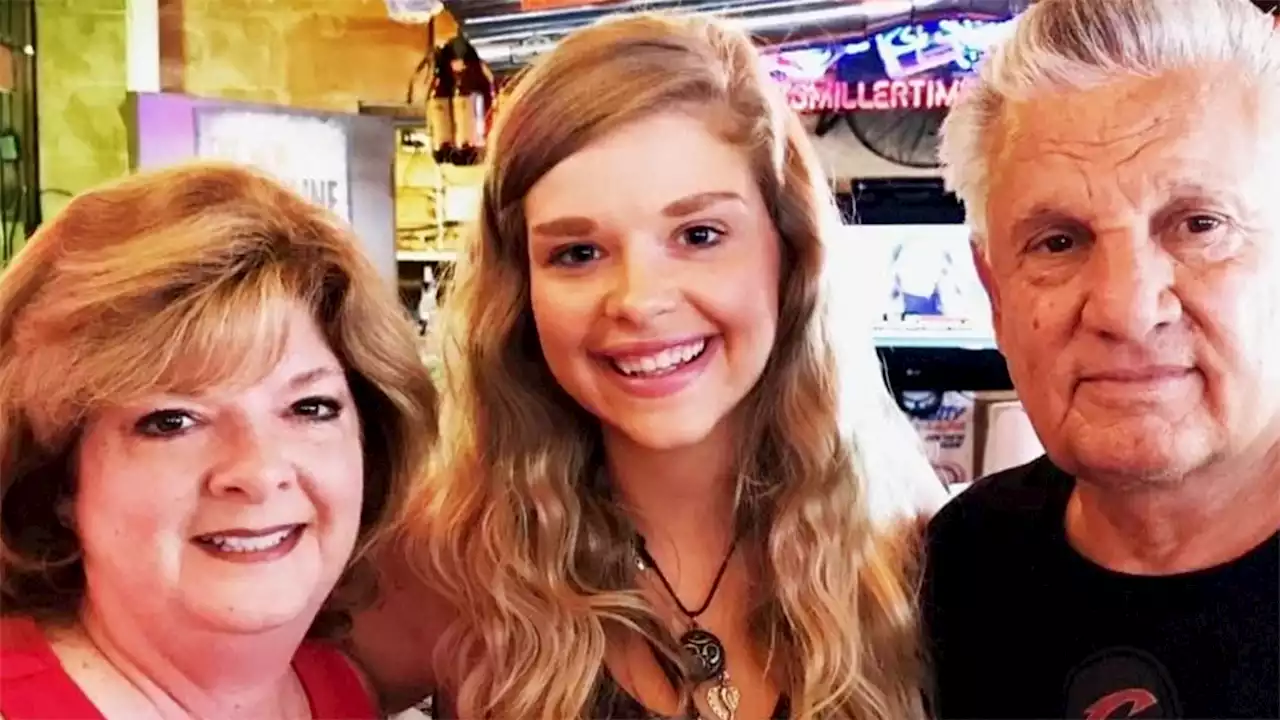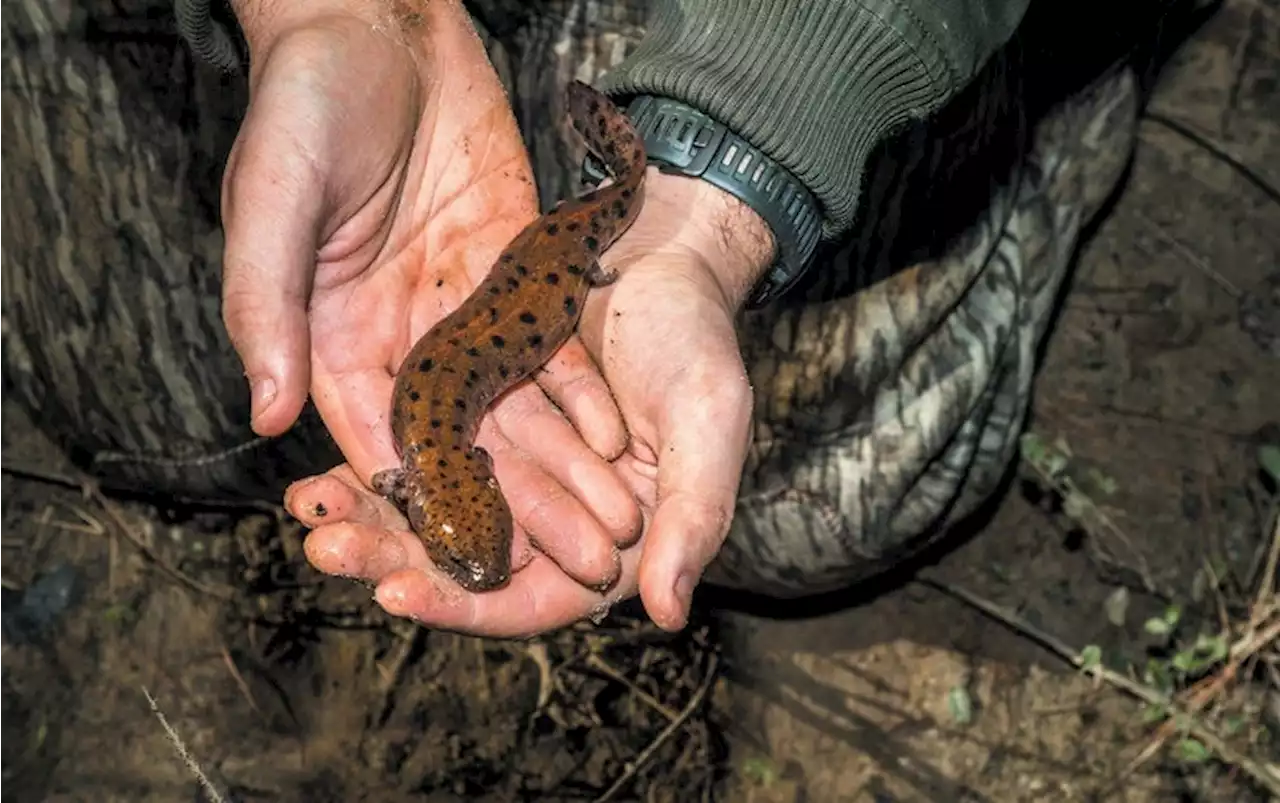The surprising persistence of salamanders is forcing us to rethink evolution.
The Neuse River waterdog lives a sluggish existence, as if burdened by an invisible weight. This mottled brown salamander, about as long as a human hand, rarely strays far from its concealed burrows beneath rocks or logs in the rivers of North Carolina. It “hunts” by sitting still in the riverbed, waiting for an insect to swim by, then lurches forward to swallow the object—a mindless reflex.
In exchange for this burden, salamanders may have gained at least one amazing ability: regeneration. They can regrow not only limbs but also up to a quarter of their brain if it is cut out—handy for survival. But Alfred Mirsky and Hans Ris of the Rockefeller Institute for Medical Research overturned this notion in 1951. They measured the amount of DNA in individual cells from several dozen animal species. To their surprise, the African lungfish and a giant salamander from the southeastern U.S., called amphiuma, had dozens of times more DNA per cell than humans, rats, birds or reptiles did. As scientists measured more species, it became clear that salamanders and lungfish were outliers.
The exploration of gigantic genomes went slowly for several decades. Scientists labored to fully sequence the genomes of fruit flies, worms and humans, but most avoided salamanders, whose sheer volume of DNA would have been a nightmare to handle. Then in 2011 Rachel Mueller, an evolutionary biologist at Colorado State University, took a major step forward.
That extra DNA has profoundly altered salamanders’ bodies, brains and hearts. In species with the very largest genomes, the anatomic distortions are obvious at a glance. The revelations began when David Wake, a prominent salamander biologist at the University of California, Berkeley, teamed up with Gerhard Roth, then a Ph.D. student at the University of Bremen in Germany. They decided to compare the brain structures of several dozen species of frogs and land-dwelling plethodontid salamanders.
Stanley Sessions, a former student of Wake’s , was studying salamanders’ special talent for regenerating severed limbs. Sessions, now a professor emeritus at Hartwick College, amputated the right rear legs from 27 species of plethodontid salamanders and measured how quickly they grew back. The animals’ genomes varied from 13 to 74 gigabases . Sure enough, Sessions found that animals with larger genomes regenerated more slowly.
Slow development is only part of how giant genomes distort bodies. Massive genomes have another major impact. Scientists accidentally noticed it more than 150 years ago, but its importance is just now being recognized. James Hanken, now at Harvard University, discovered the classic case of this in the 1980s. Hanken was studying wrist “bones” in the world’s smallest salamanders. These species of the genus Thorius inhabit nooks in Mexico’s montane forests. Some are small enough to sit on the face of a nickel. Dozens of related species have the same eight wrist bones, despite evolving separately for millions of years. But Hanken found that in Thorius species, some of the eight ancestral bones had merged.
Seeing that hollow heart was a revelation. “I can’t even imagine how that thing functionally works,” says Itgen, who, along with Mueller, submitted his results to the journal Evolution in late 2021. Profound Distortions Wake spoke with me twice in 2020; he died in April 2021. But by then, he and Sessions had finally reached an insight that had eluded them for decades: a theory of how salamanders and lungfish might benefit from outsized genomes. The theory germinated from an audacious experiment.
The idea has “some plausibility,” says Jeramiah Smith, who studies the axolotl genome at the University of Kentucky. He cautions that the picture may not be so simple; life has many ways of slowing down development when it is advantageous to do so. But with transposons so abundant in the salamander genome, it makes sense that they would play a role. “Evolution works with the material it has,” Smith says.
The trio were on a Zoom call, discussing how the hollowed-out hearts might affect the survival of salamanders. “I’ll take the extreme position,” Hanken said. Maybe the hollow hearts “are not having any impact” at all. Roth adds that if salamanders are just waiting for prey, they can simplify their entire vision system. The most extreme examples are the bolitoglossine salamanders of Europe and the Americas. These species include the largest genomes of any land-dwelling animals, up to 83 gigabases . They also happen to have the most stripped-down brains that Roth and Wake have ever seen in a salamander.
And yet they can betray us. When Wang’s team analyzed nearly 8,000 human tumors in 2019, the researchers found that in half, transposons were turning on key oncogenes that were driving the cancer’s explosive growth. Birds, with their fast metabolism and energy-demanding flight, simply can’t manage a lot of bulky DNA. Their genomes are smaller than those of most mammals, ranging from 0.89 to 2.11 gigabases—fewer than the 3.06 gigabases for humans. Among mammals, 19 of the 20 smallest genomes belong to bats, which face challenges similar to birds’.
United States Latest News, United States Headlines
Similar News:You can also read news stories similar to this one that we have collected from other news sources.
 Woman's DNA test reveals 1991 sperm sample mix-up: She's not her father's biological daughterJessica Harvey Galloway asked her parents for the DNA test hoping to find distant relatives during a planned trip to Italy.
Woman's DNA test reveals 1991 sperm sample mix-up: She's not her father's biological daughterJessica Harvey Galloway asked her parents for the DNA test hoping to find distant relatives during a planned trip to Italy.
Read more »
 Family sues doctor after DNA test shows adult IFV baby isn’t related to her fatherAn Ohio couple claimed a fertility doctor used sperm from a stranger during the 1991 insemination procedure that resulted in the birth of their daughter.
Family sues doctor after DNA test shows adult IFV baby isn’t related to her fatherAn Ohio couple claimed a fertility doctor used sperm from a stranger during the 1991 insemination procedure that resulted in the birth of their daughter.
Read more »
 Family sues doctor after DNA test shows adult IVF baby isn’t related to her fatherAn Ohio couple claimed a fertility doctor used sperm from a stranger during the 1991 insemination procedure that resulted in the birth of their daughter.
Family sues doctor after DNA test shows adult IVF baby isn’t related to her fatherAn Ohio couple claimed a fertility doctor used sperm from a stranger during the 1991 insemination procedure that resulted in the birth of their daughter.
Read more »
 Family sues hospital after they say DNA test indicates daughter isn't related to dadJessica Harvey Galloway and her parents are suing Summa Health and a doctor in Ohio after learning she is unrelated to her dad following a DNA test.
Family sues hospital after they say DNA test indicates daughter isn't related to dadJessica Harvey Galloway and her parents are suing Summa Health and a doctor in Ohio after learning she is unrelated to her dad following a DNA test.
Read more »
 Family sues hospital after they say DNA test indicates daughter isn't related to dadFor Christmas two years ago, Jessica Harvey Galloway was gifted a home DNA test kit by her parents, mom Jeanine Harvey and her dad, John Harvey, who goes by Mike. Nearly 30 years ago, the Harveys turned to Dr. Nicholas J. Spirtos, a doctor at Summa Health System’s Akron Campus in Ohio to help them on their journey to becoming parents. “Learning that your entire reality isn’t what you believed it to be is hard to explain,' Mike Harvey added.
Family sues hospital after they say DNA test indicates daughter isn't related to dadFor Christmas two years ago, Jessica Harvey Galloway was gifted a home DNA test kit by her parents, mom Jeanine Harvey and her dad, John Harvey, who goes by Mike. Nearly 30 years ago, the Harveys turned to Dr. Nicholas J. Spirtos, a doctor at Summa Health System’s Akron Campus in Ohio to help them on their journey to becoming parents. “Learning that your entire reality isn’t what you believed it to be is hard to explain,' Mike Harvey added.
Read more »
 Could a DNA sample taken 30 years ago solve the infamous yogurt shop murder case?The 1991 murder of four teenage girls in a Texas yogurt shop remains unsolved, but there's hope that advancing DNA technology will change that.
Could a DNA sample taken 30 years ago solve the infamous yogurt shop murder case?The 1991 murder of four teenage girls in a Texas yogurt shop remains unsolved, but there's hope that advancing DNA technology will change that.
Read more »
